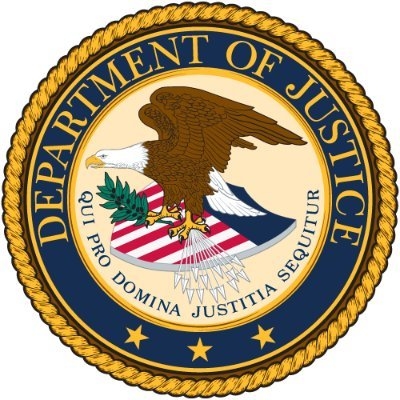The Capitol Report, produced by WisPolitics.com — a nonpartisan, Madison-based news service that specializes in coverage of government and politics — provides a weekly analysis of issues being debated in Wisconsin state government. It is underwritten by the WNA and produced exclusively for its members. WisPolitics.com President Jeff Mayers is a former editor and reporter for the Associated Press and a former political writer for the Wisconsin State Journal.
The era of the big checkbook continues. And it’s factoring into legislative races in remarkable — perhaps unprecedented — ways.
The latest reports to the state underscore the impact of the 2015 rewrite of campaign finance laws.
Republicans engineered the rewrite that allowed donations of any size to political parties and legislative caucuses, plus unlimited transfers to candidates.
That paved the way for donations such as the $6.3 million that Diane Hendricks and Liz Uihlein combined to give the Assembly and Senate GOP caucuses over the past two months.
Hendricks also gave the state GOP $1.1 million over that period, while the state Dem Party’s own megadonors came through again with LinkedIn founder Reid Hoffman giving $2.25 million over the past month and Illinois Gov. J.B. Pritzker chipping in $2 million.
The state Dem Party has mastered the rules Republicans wrote nearly a decade ago and has consistently used them to trounce the state GOP for donations.
Since Jan. 1, the state Dem Party has reported $19.9 million in donations, compared to $4.8 million by the state GOP. The state Dem Party, in turn, has sent $2.75 million to the Assembly Democratic Campaign Committee since Jan. 1 and $2.3 million to the State Senate Democratic Committee. But Hendricks and Uihlein — Nos. 38 and 216 on the latest Forbes list of the wealthiest Americans — may have single-handedly leveled the playing field in legislative races — and possibly tilted it in the Assembly GOP’s favor.
The Hendricks and Uihlein donations helped the Republican Assembly Campaign Committee raise $7.2 million between July 30 and Sept. 23, compared to the $3 million the Assembly Democratic Campaign Committee pulled in, including $1.25 million from the state party.
Meanwhile, the Committee to Elect a Republican Senate raised $2.3 million, compared to the $1.7 million the State Senate Democratic Committee pulled in.
Control of the state Senate isn’t up for grabs this fall. The key is whether Dems net at least three seats to put them in position to try flipping the chamber in 2026.
The Assembly is a different story. Dems would likely need Kamala Harris to win Wisconsin by a couple of points or so to improve their chances of winning.
A true 50-50 presidential race likely helps Republicans maintain the majority they’ve had for the past 14 years. And having a financial advantage bolsters that opportunity. Insiders note the goal for Assembly Republicans isn’t just 50 seats — not if they want a functioning majority next session. Several members expected to return have been thorns in the side of Speaker Robin Vos, R-Rochester, and a majority more in the range of 55 seats would be a lot more comfortable.
The infusion of cash helps Vos play in more seats and helps boost GOP incumbents such as Rep. Todd Novak, R-Dodgeville, who was drawn into a 54% Dem seat. Insiders also note Republicans are trying to expand the map by going after Dem Rep. Jodi Emerson and her 53% Dem seat in the Eau Claire area. Emerson’s district is 10 points less Dem than it used to be and loses the pieces of the UW-Eau Claire campus to a neighboring seat. Some Republicans believe that opens up a path to pick her off.
Some also note that Novak has run ahead of the top of the ticket before. But his district didn’t just get more Dem. It shed some areas that he’d represented for the past dozen years.
Dems argue the top of the ticket will drive results in legislative races with voters going with their partisan tendencies rather than crossing over to vote for candidates they don’t know. Dems have their own challenges, some point out. They have the opportunity to dramatically improve their lot after starting the session with just 35 seats in the 99-seat chamber. But they haven’t had to build infrastructure in some of the areas they’re now competing in because the old GOP-drawn maps were so bad for them before.
However this fall turns out, the era of big donors may be here to stay. And the change from before the 2015 rewrite is stark.
Between July 30, 2014, and Sept. 23 of that year, there were 32 donations of $50,000 or more totaling $11.2 million, according to a WisPolitics check of the state’s database. That included $2 million that Dem Mary Burke gave her gubernatorial campaign in that window.
For that same period this year, there were 119 donations of $50,000 or more, totaling $28.9 million. Along with the growth in large transactions, the latest window showed numerous transfers between parties and campaigns.
That shows how unlimited donations to parties and caucuses can fuel the growth in spending by candidates.
For more, visit WisPolitics.com
The Capitol Report is written by editorial staff at WisPolitics.com, a nonpartisan, Madison-based news service that specializes in coverage of government and politics, and is distributed for publication by members of the Wisconsin Newspaper Association.
Copyright © WisPolitics.com



